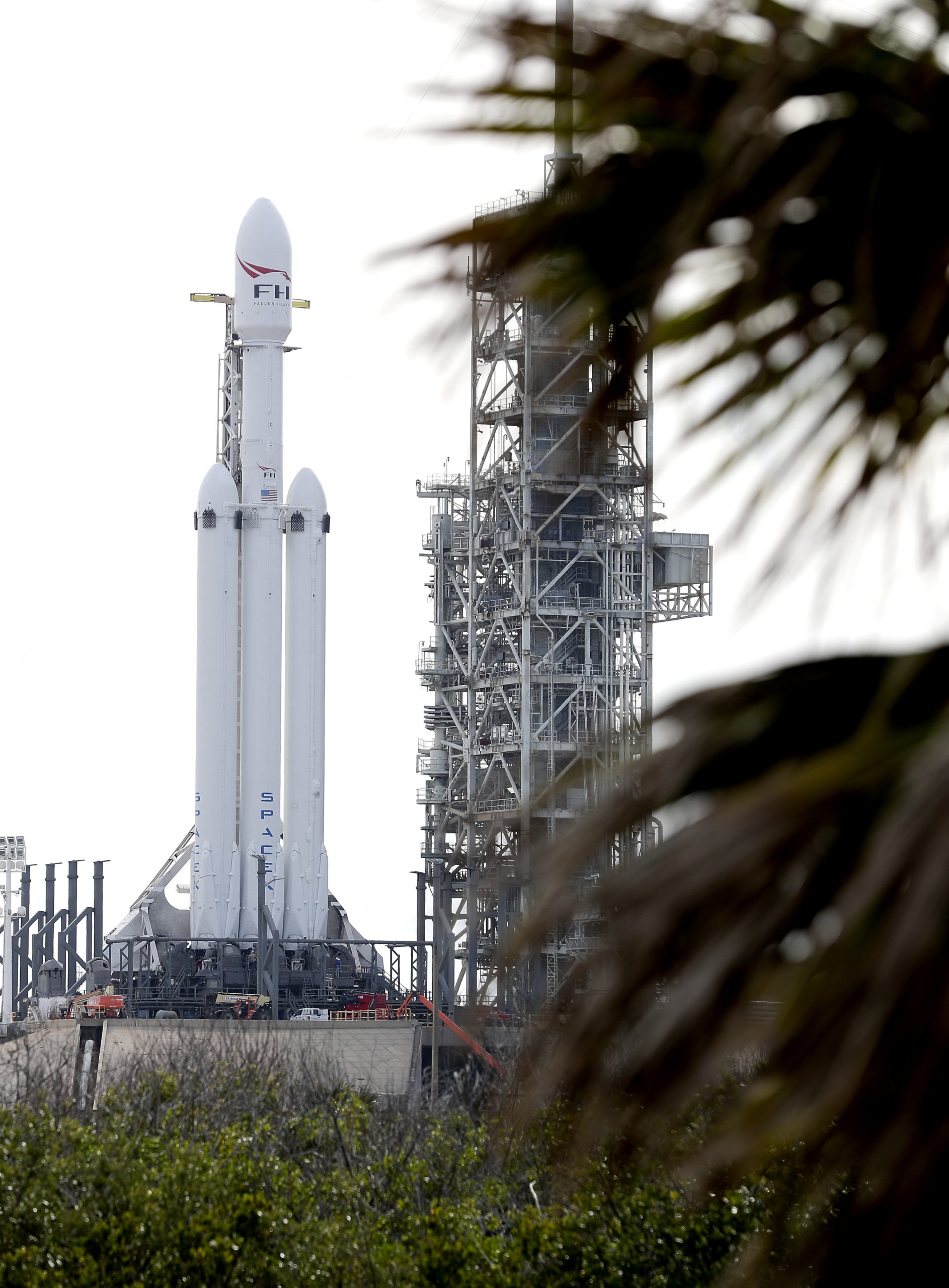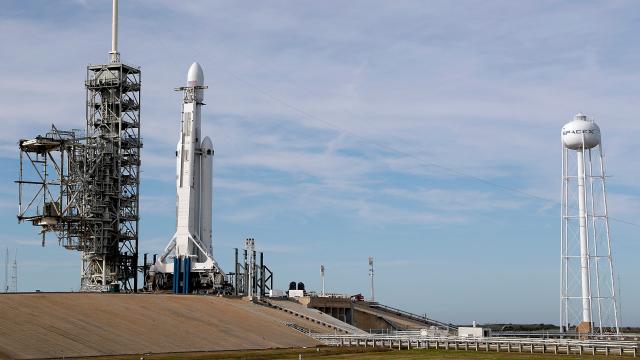The Falcon Heavy rocket is finally set to make its historic debut after seven years in development. You can watch the launch right here starting at 7:25AM AEDT.
The Falcon Heavy stands ready for launch on pad 39A at the Kennedy Space Center in Cape Canaveral, Florida. (Image: AP)
Assuming everything goes smoothly today, SpaceX’s Falcon Heavy will become the most powerful operational rocket in the world, capable of delivering 63,500kg to Low Earth Orbit. Today’s launch window is between 5:30AM AEDT and 8:00AM AEDT. SpaceX’s live broadcast (below) starts at 1:10 pm EDT.
At 4:02AM, Musk tweeted: “Upper atmosphere winds currently 20% above max allowable load. Holding for an hour to allow winds to diminish.” Accordingly, SpaceX bumped the launch to 6:20AM AEDT. There was then yet more delays, with the launch rescheduled for 7:10AM AEDT, then 7:45AM AEDT. Today’s launch window closes at 8:00AM AEDT.
However, at 5:52AM AEDT Musk tweeted, “Launch auto-sequence initiated (aka the holy mouse-click) for 3:45 [7:45AM AEDT] liftoff.”
And it looks like this very well may happen. At 6:45AM AEDT SpaceX put out this tweet: “T-60 minutes until Falcon Heavy’s first test flight. Launch webcast will go live about 20 minutes before liftoff.”
“The weather is looking good,” said SpaceX CEO Elon Musk at a news conference yesterday. “The rocket is looking good.” Should that change and the launch get canceled, SpaceX will try again tomorrow with the same launch window. The Falcon Heavy is currently sitting on Pad 39A at the Kennedy Space Center in Florida.
Armed with 27 Merlin engines, the Falcon Heavy will feature twice the launching power of any existing rocket. Its first stage consists of two Falcon 9 first-stage rockets, which are attached to a central “core” rocket, itself a modified Falcon 9 booster.

Image: AP
A dummy payload consisting of Musk’s personal Tesla Roadster sits up top in the cargo hold. With the radio repeatedly playing David Bowie’s “Life on Mars”, the shiny red Roadster will be placed in an elliptical orbit around the Sun at a distance that will take it as far out as Mars. The car is expected to stay in orbit for hundreds of millions of years, possibly even longer. To make it happen, the Falcon Heavy’s upper stage will coast for about six hours before firing its second stage for a third time. It’s a neat publicity stunt, but it will also demonstrate the rocket’s ability to send payloads directly to geostationary orbit.
But that assumes the Roadster actually reaches space. There’s a real possibility that things could go horribly wrong today – it is a test launch, after all. Once aloft, the three main segments of the rocket could start to produce unanticipated vibrational resonances, causing the rocket to break apart. The central core should be able to handle these stresses, but we won’t know until this thing is in the air. Another bad possibility would see the rocket explode or crash near the launch pad, releasing the explosive energy equal to 1.8 million kilograms of TNT. An explosion like that would wreck the launch pad and require months of repair work.
If the launch is successful, however, SpaceX says it will be ready to re-launch the Falcon Heavy in a few months, but with a paying customer. The rocket could enable larger satellites to be placed in orbit and allow for more ambitious projects in space, including larger robots on Mars and complex missions to Jupiter and Saturn.
But in a surprising about-face, Musk said yesterday that the Falcon Heavy will not be used to send astronauts into space. The Wall Street Journal reports that the CEO is shifting his attention to a larger space-transportation system called the Big Falcon Rocket (BFR for short) for that. This almost certainly means that SpaceX’s plan to send space tourists around the Moon and back later this year will not happen. The Falcon Heavy, we’re learning, will simply deliver large, heavy payloads to space.
